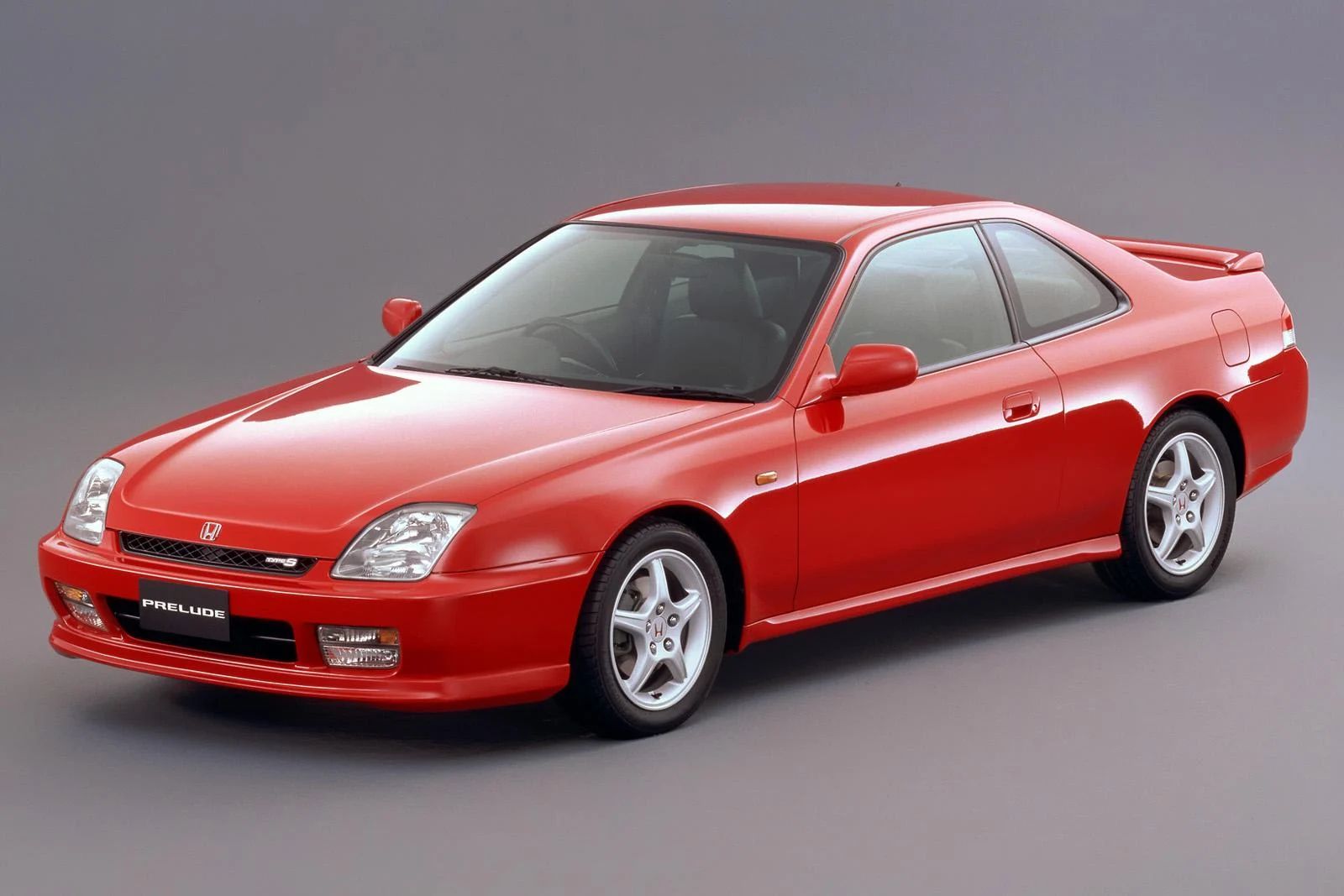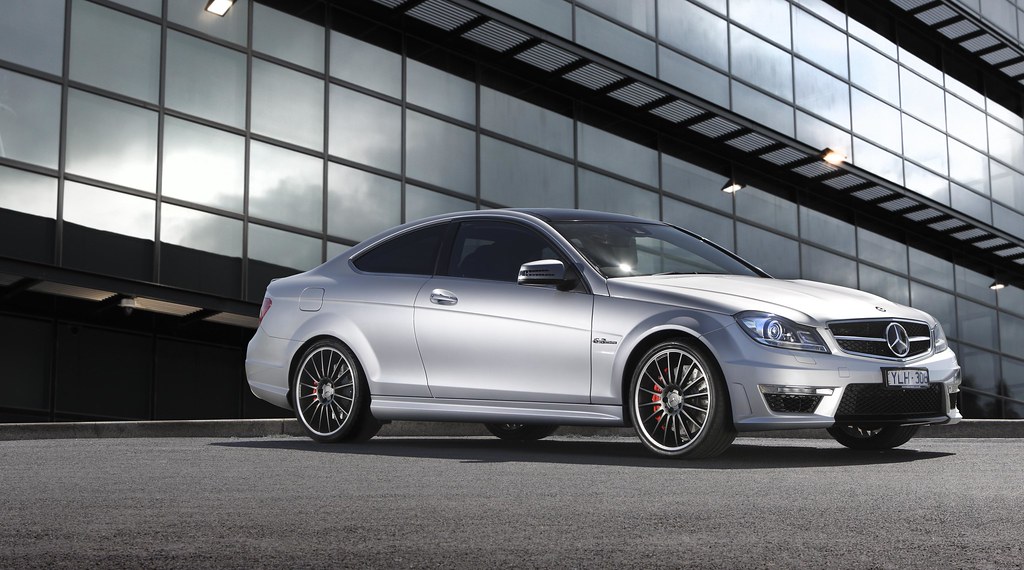
When you cruise past a car dealership, it’s a common sight to behold immaculate rows of brand-new vehicles gleaming under the sun. It creates an illusion of constant movement, a seamless flow of cars from manufacturer to driveway. However, a closer look often reveals a different reality: some of these vehicles have taken root on their lots, lingering for weeks, even months, unsold and unloved.
Indeed, despite American buyers taking home almost 16 million new cars, trucks, and SUVs last year—averaging close to 44,000 vehicles daily—some models defy this rapid pace. These slow-moving vehicles, often taking over four months to find a buyer, represent not just a challenge for automakers but also a significant opportunity for astute consumers. Dealers, keen to clear inventory, become more motivated to finalize sales, often leading to added incentives or more generous negotiation room.
What’s particularly striking is the identity of many of these slow movers. An analysis by Car and Driver, in collaboration with Kelley Blue Book, uncovered that a staggering nine out of ten vehicles on their slowest-movers list hail from brands typically associated with luxury or premium segments. This phenomenon suggests that even aspirational names are not immune to market stagnation when specific attributes or broader market forces work against them. Here, we delve into the first five SUVs that are taking their sweet time to leave the showroom floor, exploring the distinct factors contributing to their extended stays.
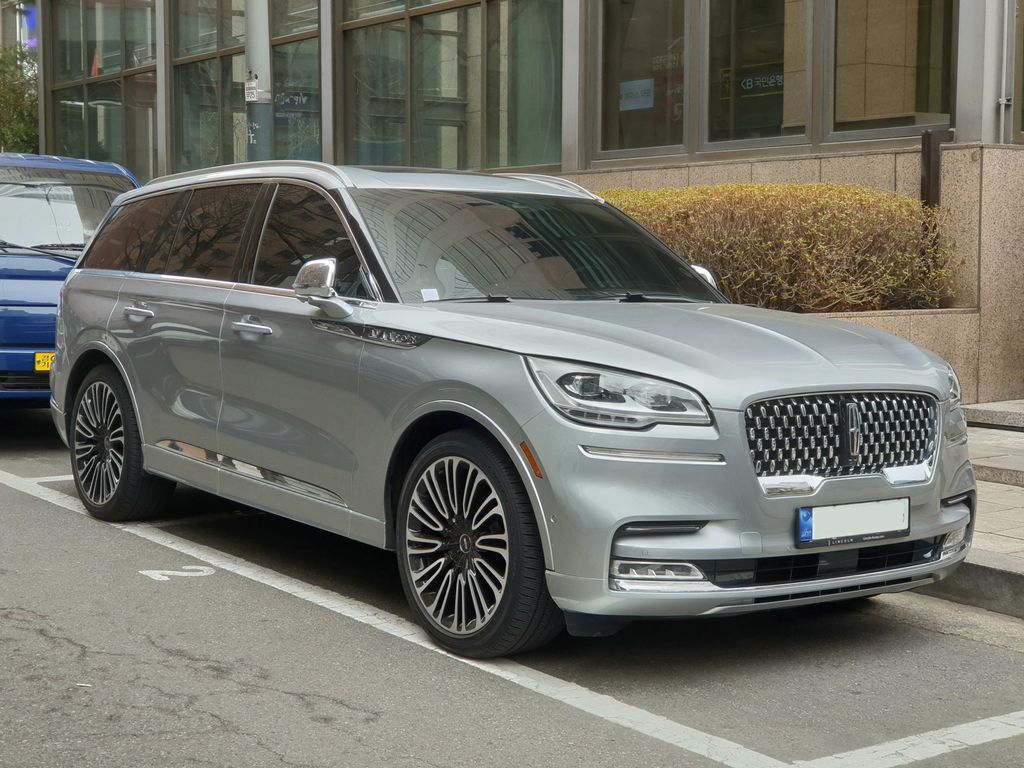
1. **Lincoln Aviator**
The Lincoln Aviator, a mid-size SUV from the luxury marque, consistently finds itself among the vehicles struggling to gain traction on dealer lots. Across various reports, its average time to sell hovers around 104 to 105.1 days, indicating a persistent challenge in converting showroom visits into sales. This extended stay suggests that despite its premium positioning, something isn’t quite resonating with potential buyers.
One contributing factor might be the timing of its updates. While a facelift was introduced for the 2025 model year, this refresh doesn’t appear to have generated the anticipated buyer enthusiasm needed to clear existing inventory. Consumers, perhaps aware of imminent changes, might be delaying purchases or simply not finding the refreshed model compelling enough to expedite their decision-making process.
However, the Aviator itself is not without its merits. It is powered by a robust engine designed to deliver exceptional performance, promising a dynamic driving experience across diverse terrains. Furthermore, its compliant suspension system is engineered to provide a remarkably smooth ride, even when navigating less-than-perfect roads, contributing to a comfortable cabin experience. Priced at approximately $69,283, reflective of its premium features and high-end design, it seems the combination of its price point and market perception is creating a hurdle. The slow sales signal that buyers may perceive better value or more compelling options elsewhere in the competitive luxury SUV segment.
Car Model Information: 2022 Lincoln Aviator Reserve AWD
Name: Lincoln Aviator
Caption: 2020 Lincoln Aviator
Manufacturer: The Lincoln Motor Company
Production: unbulleted list
ModelYears: unbulleted list
Class: unbulleted list
BodyStyle: Sport utility vehicle
Layout: unbulleted list
Categories: 2010s cars, 2020s cars, All Wikipedia articles written in American English, Articles with short description, Cars introduced in 2002
Summary: The Lincoln Aviator is a mid-size, three-row luxury SUV manufactured and marketed under the Lincoln brand of Ford Motor Company — and now in its second generation, with a hiatus from 2006 to 2020.
The first generation Aviator was manufactured for 2003–2005 model years as a rebadged variant of the third generation Ford Explorer — and assembled at the now-closed St. Louis Assembly in Hazelwood, Missouri, alongside the Explorer and Mountaineer.
For the 2020 model year, Lincoln reintroduced the Aviator as a badge engineered variant of the sixth generation Ford Explorer manufactured at Chicago Assembly and offered with a plug-in hybrid variant.
Get more information about: Lincoln Aviator
Buying a high-performing used car >>>
Brand: Lincoln Model: Aviator
Price: $47,950 Mileage: 27,533 mi.
Read more about: Urgent Safety Alert: Ford Recalls 133,000 Lincoln Aviator SUVs Over Detaching Trim Components
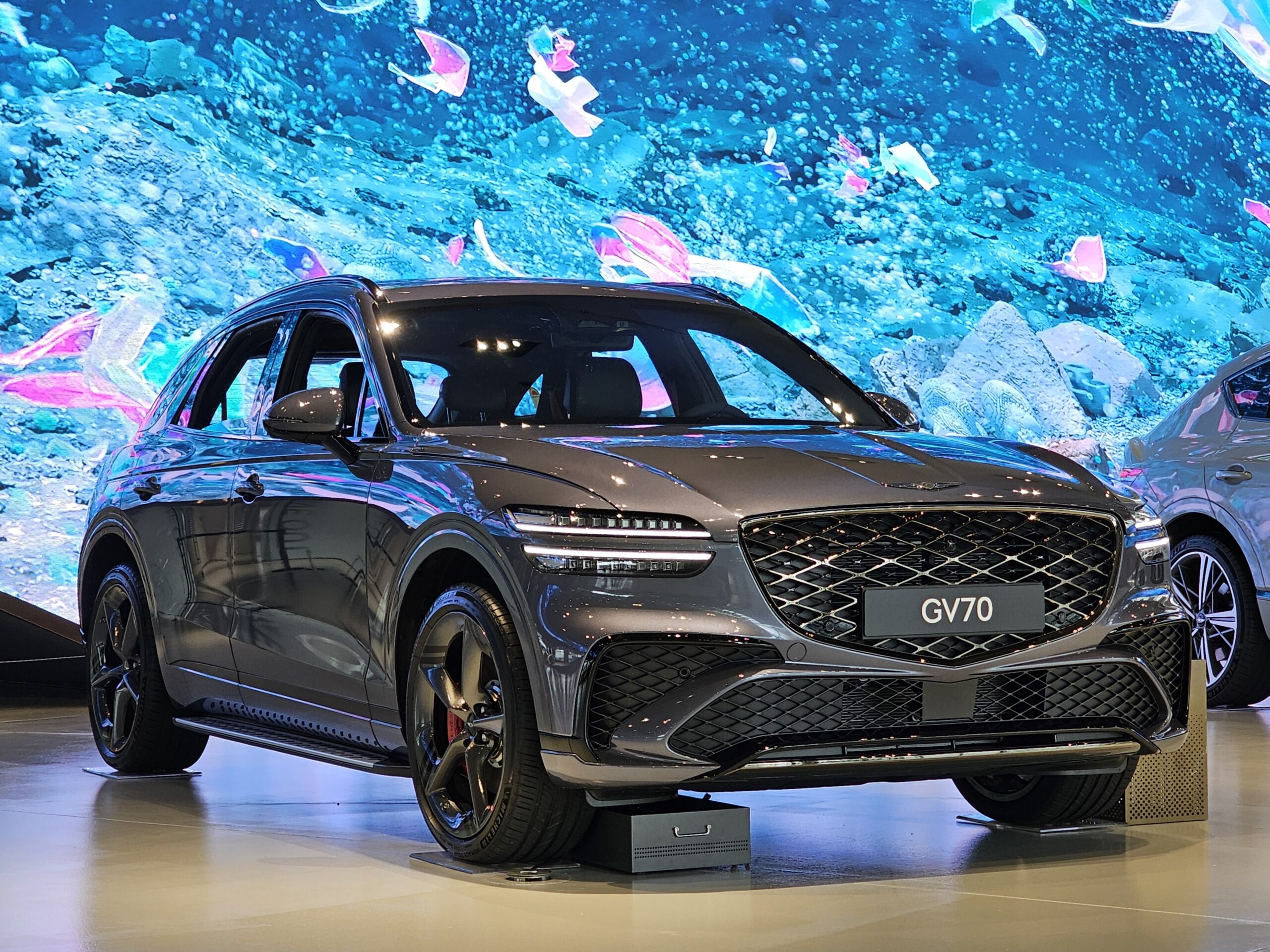
2. **Genesis GV70**
The Genesis GV70, a relatively new entrant in the luxury compact SUV market, is another vehicle experiencing a longer-than-average stay on dealer lots, taking an average of 106 days to sell. This performance is particularly noteworthy given its generally positive reception for design and performance. Its sleek aesthetics and a powerful engine option might suggest a quicker turnover, yet the data tells a different story.
For instance, equipped with the available 3.5-liter twin-turbo V6 engine, the GV70 boasts impressive acceleration, capable of reaching 60 mph in less than five seconds. This level of performance positions it favorably against established rivals, appealing to those who appreciate a spirited driving experience. The brand’s focus on luxury and technology is evident, aiming to carve out a niche in a crowded premium segment.
Despite its athletic capabilities and luxurious appointments, the GV70’s extended dwell time suggests it hasn’t quite achieved the market momentum needed to rapidly move inventory. Perhaps the brand’s newer status compared to European luxury giants, or subtle market shifts, are impacting buyer confidence or awareness. An upcoming subtle MY26 makeover is on the horizon, which might be intended to address some of these perceived shortcomings or simply refresh its appeal to a broader audience.
Car Model Information: 2023 Genesis GV70 2.5T
Name: Genesis GV70
ModelCode: JK1
Caption: 2021 Genesis GV70 Sport
Manufacturer: Genesis Motor
Production: 2020–present
ModelYears: 2022–present
Assembly: Ulsan
Designer: Ki-Euk Kim (exterior)
Class: Compact executive car,crossover SUV
BodyStyle: Sport utility vehicle
Layout: unbulleted list
Platform: Hyundai-Kia M platforms
Engine: unbulleted list
Motor: Synchronous motor#Permanent-magnet
Powerout: unbulleted list
Transmission: Automatic transmission
Battery: Lithium-ion battery
Wheelbase: 2875 mm
Abbr: on
Length: 4715 mm
Width: 1910 mm
Height: 1630 mm
Weight: unbulleted list
Charging: Vehicle-to-grid
Sp: uk
Categories: All-wheel-drive vehicles, Articles containing Korean-language text, Articles with short description, CS1 Korean-language sources (ko), Cars introduced in 2020
Summary: The Genesis GV70 (Korean: 제네시스 GV70) is a compact luxury D-segment crossover SUV manufactured by Korean luxury automaker Genesis, a luxury vehicle division of Hyundai. Internally codenamed JK1, it is the second SUV model from the brand after the mid-size GV80.
Get more information about: Genesis GV70
Buying a high-performing used car >>>
Brand: Genesis Model: GV70
Price: $36,439 Mileage: 25,559 mi.
Read more about: Protecting Your Purchase: A Consumer Report on Top Car Warranties and Key Manufacturer Recall Trends
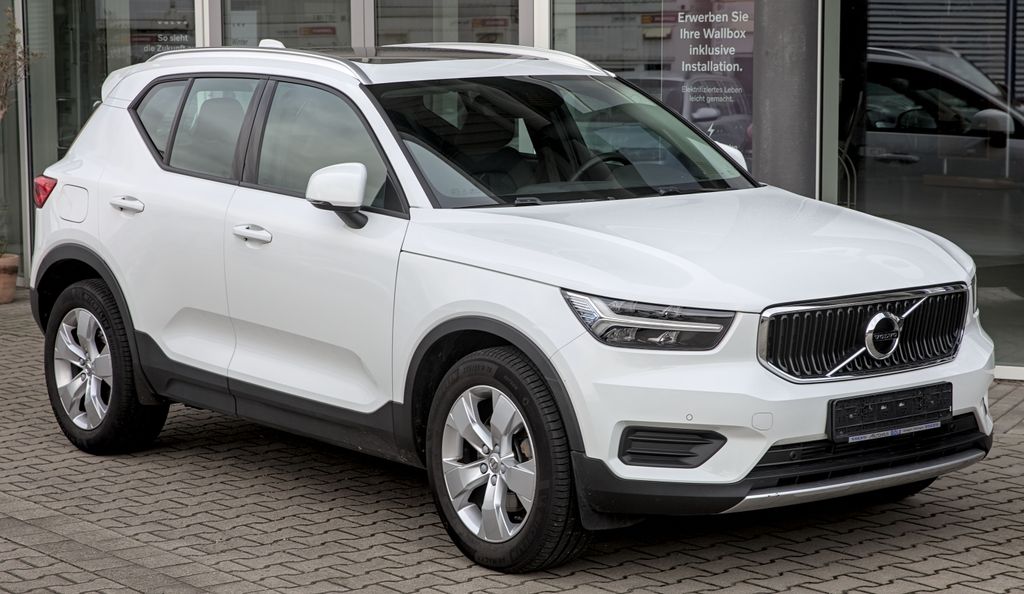
3. **Volvo XC40**
Volvo’s compact SUV, the XC40, has also found itself spending a considerable amount of time on dealership lots, averaging 107 days to sell. This duration is quite telling, especially for a segment that typically sees high demand. The XC40 debuted in 2018, and its longevity on the market, while a testament to its initial design, might now be working against its sales velocity.
Initially, the XC40 was lauded for its distinctive styling, practical interior, and strong emphasis on safety, all hallmarks of the Volvo brand. It presented a fresh, youthful alternative in the luxury subcompact SUV category. Its “plenty to offer” status, as noted in the context, refers to these comprehensive attributes that usually draw buyers in.
However, the automotive market evolves at a rapid pace, with new competitors constantly emerging and existing models receiving frequent updates. The fact that the XC40 has been offering essentially the same package since 2018 could be a significant factor behind buyer reluctance. Modern consumers increasingly seek the latest technology, design trends, and powertrain options, and an aging model, even a good one, can struggle to maintain its allure.
Furthermore, external economic and political factors could exacerbate its sales challenges. The context mentions potential implications of a 30 percent tariff rate from the EU, should it come into effect. Such tariffs could lead to increased prices or reduced profit margins for Volvo, potentially impacting pricing strategies or the brand’s ability to offer competitive incentives, thus further slowing down the XC40’s movement off lots if not carefully managed.
Car Model Information: 2023 Volvo XC40 Recharge Pure Electric Twin Ultimate
Name: Volvo XC40
Aka: ubl
Manufacturer: Volvo Cars
Production: ubl
ModelYears: ubl
Designer: Ian Kettle
Class: Subcompact luxury crossover SUV
BodyStyle: ubl
Platform: Compact Modular Architecture
Assembly: ubl
Related: ubl
Layout: ubl
Engine: ubl
Motor: ubl
Abbr: on (C40)
Transmission: ubl
Drivetrain: PHEV
Battery: ubl
Charging: Combined Charging System
Wheelbase: 2702 mm
Length: ubl
Width: 1863 mm
Height: ubl
Weight: convert
Categories: All-wheel-drive vehicles, All Wikipedia articles written in British English, Articles with short description, CS1 Dutch-language sources (nl), CS1 German-language sources (de)
Summary: The Volvo XC40 is a subcompact luxury crossover SUV (C-segment) manufactured by Volvo Cars. It was unveiled on 21 September 2017 as the smallest SUV model from Volvo, below the XC60. Orders started in September 2017, and manufacturing began in November 2017.
Along with conventional petrol and diesel engines, a plug-in hybrid model was introduced in 2019, and a fully electric model was released in 2020. Both the plug-in hybrid and the electric versions were marketed as the XC40 Recharge. In 2024, Volvo renamed the battery electric XC40 to the Volvo EX40, aligning it with newer battery electric models such as the EX30 and the EX90.
A coupe version of the battery electric model with a sloping rear roof was released in 2021 as the C40 Recharge. It was renamed to the Volvo EC40 since 2024.
The XC40 received the European Car of the Year Award at the 2018 Geneva Motor Show. and the car was named Car of the Year Japan for 2018/2019.
Get more information about: Volvo XC40
Buying a high-performing used car >>>
Brand: Volvo Model: XC40
Price: $36,399 Mileage: 23,279 mi.
Read more about: Car Subscription Services: A Comprehensive Review to Determine Their Value and Fit for Your Lifestyle
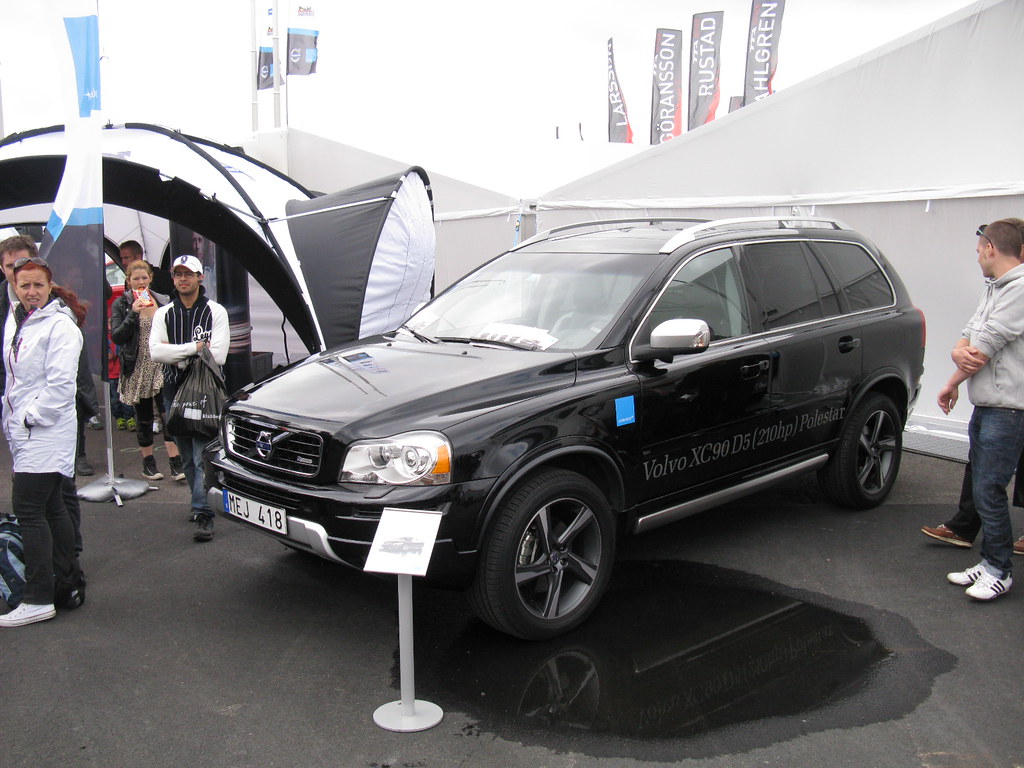
4. **Volvo XC90**
Sharing the fate of its smaller sibling, the Volvo XC90, a mid-size SUV, also experiences prolonged stays on dealer lots, averaging 108 days. This places the XC90 right alongside the XC40 in the cohort of vehicles that are struggling to find buyers quickly. It indicates a broader challenge for Volvo’s SUV lineup in the current market, despite both models traditionally being strong contenders in their respective segments.
The XC90 has long been a flagship model for Volvo, known for its elegant design, luxurious and minimalist interior, and industry-leading safety features. It targets families and individuals seeking a sophisticated and secure ride. Its presence on this slow-selling list suggests that even these well-established attributes are not enough to guarantee rapid sales in today’s fiercely competitive SUV market.
Similar to the XC40, the XC90 has faced the challenge of an evolving market. While a facelift arrived this spring, featuring a new grille and dashboard, the impact of such updates can sometimes be incremental. Buyers often look for more substantial overhauls or new technological leaps, especially in a segment where innovation is a key differentiator. The slow movement suggests that these recent updates may not be enough to significantly accelerate sales or overcome prevailing market hesitations.
As a larger, premium SUV, the XC90 also faces intense competition from a host of rivals, both from established luxury brands and increasingly capable mainstream offerings. The combination of an aging platform (despite refreshes) and the sheer volume of strong alternatives could be diverting potential buyers, prompting them to explore other options that might offer newer tech, more aggressive pricing, or different brand cachet.
Car Model Information: 2018 Volvo XC90 T6 Momentum
Name: Volvo XC90
Caption: 2018 Volvo XC90
Manufacturer: Volvo Cars
Production: 2002–present
Class: Executive car,crossover SUV
BodyStyle: SUV
Layout: ubl
Categories: 2010s cars, 2020s cars, All-wheel-drive vehicles, All articles with dead external links, All articles with unsourced statements
Summary: The Volvo XC90 is a mid-size luxury SUV manufactured and marketed by Volvo Cars since 2002 and in its second generation.
The first generation was introduced at the 2002 North American International Auto Show and used the Volvo P2 platform shared with the first generation Volvo S80 and other large Volvo cars. It was manufactured at Volvo’s Torslandaverken in Sweden. Volvo moved production equipment of the first generation to China and ended Swedish production at the end of 2014, renaming the car as the Volvo XC Classic (or Volvo XC90 Classic).
At the end of 2014, the second generation XC90 was introduced. It is based on a new global platform, the Scalable Product Architecture (SPA). Both generations of the XC90 have won Motor Trend’s SUV of the Year award in their debuts.
In late 2022, the electric-only EX90 was introduced as the successor of the XC90. However, in September 2024, Volvo launched the second facelift of XC90, and stated that both models would be sold together for the foreseeable future.
Get more information about: Volvo XC90
Buying a high-performing used car >>>
Brand: Volvo Model: XC90
Price: $20,834 Mileage: 90,682 mi.
Read more about: Skip These Cars: The 18 Most Unreliable Models of 2024 Revealed
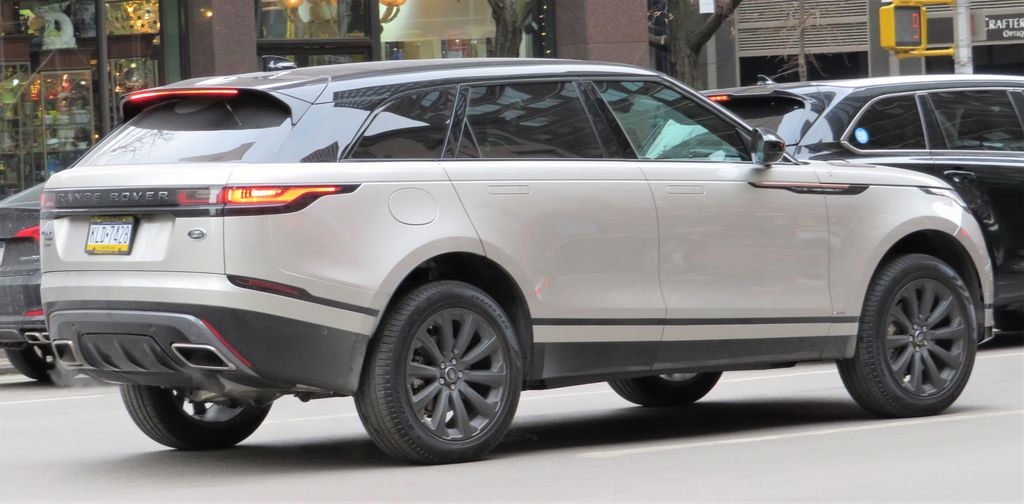
5. **Range Rover Velar**
The Range Rover Velar, often described as Britain’s answer to the Porsche Macan, possesses undeniable style and a sleek aesthetic, yet it finds itself spending an average of 111 days on dealer lots before securing a buyer. This extended period signals that despite its design prowess and premium branding, the Velar is facing difficulties in convincing American consumers to part with their money.
The Velar was introduced to slot between the Evoque and the Range Rover Sport, aiming to capture a segment of buyers looking for a more design-focused and avant-garde luxury SUV. Its distinctive lines and sophisticated cabin certainly contribute to its unique appeal. The “plenty of style” mentioned in the context is a direct acknowledgment of its strong visual identity, which should, in theory, be a major selling point in the luxury market.
However, the phrase “clearly not enough substance to entice Americans into getting out their checkbooks” points to a critical disconnect. While aesthetics are important, luxury SUV buyers also demand a comprehensive package of performance, reliability, advanced technology, and practical utility. It suggests that, in the minds of potential buyers, the Velar’s perceived substance—its overall value proposition, driving dynamics, or perhaps even long-term ownership prospects—might not be aligning with its stylish exterior or price point.
Even a recent revision to the SUV has not managed to significantly accelerate its sales. This indicates that the challenges facing the Velar run deeper than superficial updates. It could be battling intensified competition from rivals that offer compelling alternatives, or perhaps consumer perceptions about its value or ongoing running costs are playing a role. For discerning luxury SUV buyers, a vehicle needs to embody both form and function flawlessly, and the Velar’s extended stay on lots suggests it may be missing a crucial element in that delicate balance.
Picking up where we left off, the narrative of premium and popular SUVs struggling to find their homes continues, offering further insights into the complexities of the automotive market. While the previous section highlighted models battling specific market forces and evolving consumer tastes, the story remains consistent across a broader spectrum of SUVs. These next five vehicles offer further insights into the unique challenges they face, from robust luxury powerhouses to compact offerings battling fierce competition. Each model’s extended stay on dealer lots paints a clear picture of shifting priorities among American buyers, unraveling why these capable machines are becoming fixtures rather than fleeting visions on the open road.
Car Model Information: 2019 Subaru Forester Premium
Name: Land Rover Range Rover Velar
Caption: 2017 Range Rover Velar First Edition D3
Manufacturer: Jaguar Land Rover
ModelCode: L560
Production: 2017–present
Assembly: Solihull
Designer: Gerry McGovern
Class: Compact executive car,crossover SUV
BodyStyle: Sport utility vehicle
Related: Jaguar XE,Jaguar XF (X260),Jaguar F-Pace
Layout: Front-engine, four-wheel-drive layout
Engine: ubl
Motor: ubl
Abbr: on
Transmission: ZF 8HP transmission
Drivetrain: Mild hybrid,PHEV
Battery: Kilowatt-hour,Lithium-ion battery
Wheelbase: 2874 mm
Length: 4803 mm
Width: 2032 mm
Height: 1665 mm
Weight: convert
Sp: uk
Charging: 35 kW DC (PHEV 2023)
Categories: All-wheel-drive vehicles, All Wikipedia articles written in British English, Articles with short description, Cars introduced in 2017, Cars of India
Summary: The Land Rover Range Rover Velar, generally known as the Range Rover Velar, () is a crossover SUV produced by British automotive company Jaguar Land Rover under their Land Rover marque. The fourth model in the Range Rover line, the Velar was unveiled on 1 March 2017 in London, England. The Velar was released in the summer of 2017. The name Velar had previously been used for a series of pre-production first-generation Range Rovers in 1969.
The Range Rover Velar was named “World’s Most Beautiful Car” in 2018, receiving the design award at the 2018 World Car Awards.
The vehicle received a facelift in 2023.
Get more information about: Range Rover Velar
Buying a high-performing used car >>>
Brand: Range Rover Model: Velar
Price: $21,123 Mileage: 53,226 mi.
Read more about: Beyond the Showroom Shine: Uncovering the Deep Discounts on Trucks (and More) Lingering on Dealer Lots
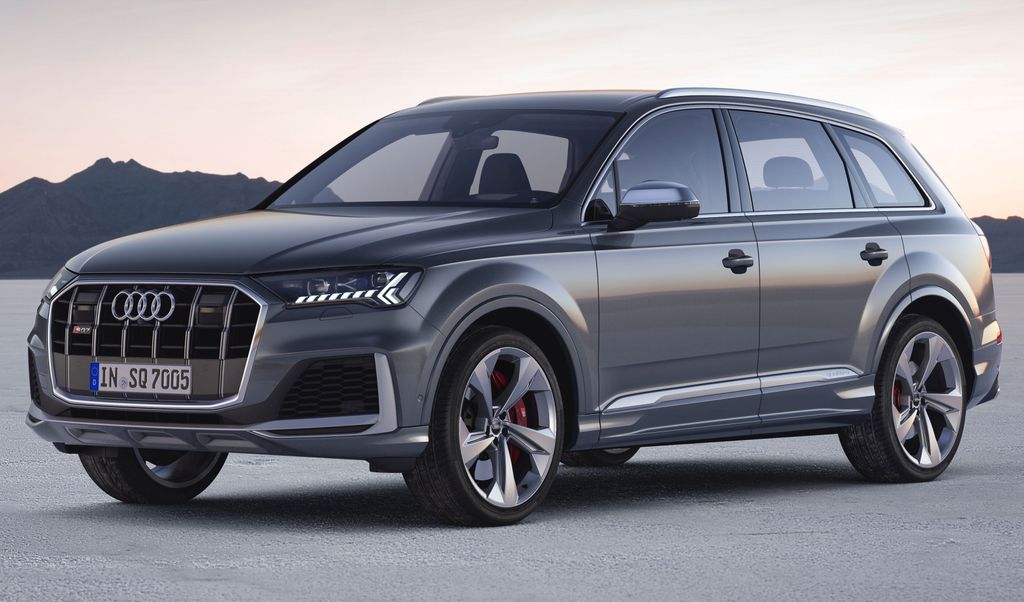
6. **Audi SQ7**
The Audi SQ7, a formidable ‘super-SUV,’ finds itself in a peculiar position on dealer lots, lingering for an average of 112 days before finding a buyer. Despite its impressive credentials, including a powerful 500 hp (507 PS) engine and the undeniable practicality of a third row not offered by its Porsche Cayenne cousin, it struggles to accelerate off the forecourt. Its age, with the SQ7 debuting in the US for 2020 and the underlying Q7 platform dating back to 2015, could be a subtle deterrent for modern buyers consistently seeking the very latest innovations.
Even with a price tag that positions it approximately $35,000 cheaper than the more powerful BMW X5M, the SQ7’s compelling value proposition isn’t translating into swift sales. This suggests that while its high performance and relative affordability in the high-performance SUV segment are noteworthy, they aren’t enough to overcome other perceived limitations. The market may be leaning towards the allure of newer, more frequently updated rivals, indicating a less forgiving environment for even minor anachronisms in rapidly evolving luxury segments.
Car Model Information: 2022 Audi SQ7 4.0T Prestige
Name: Audi Q7
Manufacturer: Audi AG
Production: November 2005–present
ModelYears: 2006–present
Class: Full-size,luxury SUV
BodyStyle: SUV
Layout: Longitudinal engine,front-engine, four-wheel-drive
Sp: uk
Categories: 2010s cars, 2020s cars, All-wheel-drive vehicles, All Wikipedia articles written in British English, All articles with dead external links
Summary: The Audi Q7 is a crossover SUV made by the German manufacturer Audi, unveiled in September 2005 at the Frankfurt Motor Show. Production of this seven-seater SUV began in November 2005 at the Volkswagen Bratislava Plant in Bratislava, Slovakia.
The Q7 was the first SUV sold by Audi and went on sale in 2006. Later, Audi’s second SUV, the Q5, was unveiled as a 2009 model. Audi has since unveiled a third SUV model, the Q3, which went on sale in the third quarter of 2011, and a fourth SUV model, the Q2, which went on sale in November 2016. The Q7 shares a Volkswagen Group MLB platform and chassis with the Bentley Bentayga, Lamborghini Urus, Porsche Cayenne and the Volkswagen Touareg.
The Q7 is the second largest vehicle from Audi, being surpassed by the Q6 since 2022. While the Q7 has been the flagship SUV in Audi’s product portfolio, a top-of-the-line model with a lower roof, called the Audi Q8, was released in 2018.
It was one of the vehicles involved in the Volkswagen emissions scandal, with the company ordered to buy back some of the affected cars manufactured between 2009 and 2012. The Q7 is also subject to hundreds of NTSB complaints with many relating to potentially catastrophic engine failure issues, and a class-action lawsuit related to squealing brakes.
Get more information about: Audi Q7
Buying a high-performing used car >>>
Brand: Audi Model: SQ7
Price: $46,059 Mileage: 73,774 mi.
Read more about: Beyond the Showroom Shine: Uncovering the Deep Discounts on Trucks (and More) Lingering on Dealer Lots
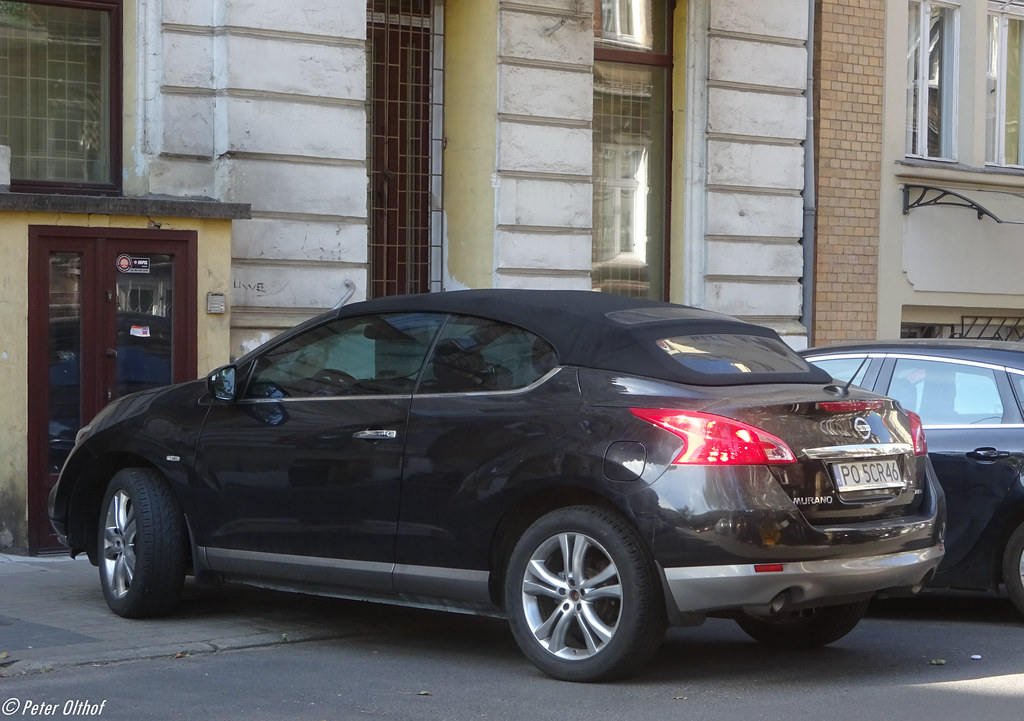
7. **Nissan Murano**
The Nissan Murano, often described as handsome, comfortable, and well-equipped, is another SUV that averages a significant 88.7 days on the market before being sold. Despite these appealing attributes, its age is becoming increasingly evident, particularly concerning its powertrain. The characteristic droning engine, often cited by reviewers, alongside its somewhat limited cargo space, presents notable drawbacks that appear to deter potential buyers in a segment where practicality and refined driving dynamics are highly valued.
In a competitive market saturated with newer, more innovative SUV offerings, the Murano’s strong suit of ‘plenty of redeeming features’ might not be sufficient to stand out among fresh competition. While it remains a viable option for those prioritizing style and reliability, its slower sales indicate that consumers are increasingly weighing these against more modern performance, enhanced interior flexibility, and an overall up-to-date value proposition. The extended time on lots suggests that the Murano is struggling to connect with the evolving expectations of today’s SUV buyer, who demands a comprehensive blend of contemporary features and efficient performance.
Car Model Information: 2013 Nissan Murano S
Name: Nissan Murano
Manufacturer: Nissan
Production: 2002–present
ModelYears: 2003–present
Class: Mid-size crossover SUV
Layout: Front-engine, front-wheel-drive layout
Predecessor: Nissan R’nessa
Successor: Nissan Pathfinder#Pathfinder Concept (2023, China)
Caption: 2024 Nissan Murano (Z52)
Categories: 2010s cars, 2020s cars, All-wheel-drive vehicles, All Wikipedia articles written in American English, All articles with dead external links
Summary: The Nissan Murano (Japanese: 日産・ムラーノ, Hepburn: Nissan Murāno) is a mid-size crossover SUV manufactured and marketed by Nissan since May 2002 for the 2003 model year. The fourth generation was revealed in October 2024.
As Nissan’s first crossover SUV for the United States and Canada, the Murano was designed at Nissan America in La Jolla, California, and was based on the Nissan FF-L platform shared with the third generation Altima. The European version of the Murano began sales in 2004.
The Murano was Nissan’s only crossover SUV in the United States until September 2007, when the Rogue went on sale. In Canada, the X-Trail had been on sale as Nissan’s second car based SUV since 2004 as a model for 2005; it was replaced by the 2008 Rogue at the end of 2007. The Murano is sized between the Pathfinder and the discontinued Xterra (which was replaced by the Rogue as a compact SUV). For the model years of 2011 to 2014, a convertible variant, the Murano CrossCabriolet, was available for the second-generation model. As of 2018, the Murano is sized between the X-Trail and the larger Pathfinder.
The nameplate Murano derives from the Italian islands of Murano and the namesake Murano art glass for which the islands are widely known.
Get more information about: Nissan Murano
Buying a high-performing used car >>>
Brand: Nissan Model: Murano
Price: $7,645 Mileage: 119,262 mi.
Read more about: Financial Freefall: The 15 Cars That Will Absolutely Decimate Your Wallet with Depreciation
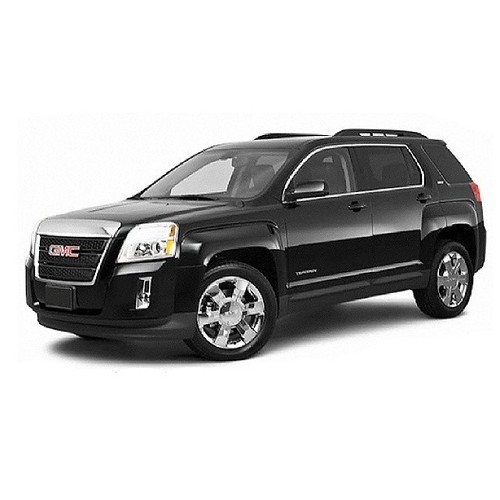
8. **GMC Terrain**
Despite the compact SUV segment experiencing robust sales, with options like the Honda CR-V and Mazda CX-5 currently standing out, the GMC Terrain is not keeping pace with its rivals. While it offers a spacious interior, a modern design, and satisfactory standard technology, its journey off dealer lots is notably slower than that of its more successful peers. The underlying issue, as highlighted by reports from Car and Driver, points to an average construction quality and the use of below-average materials within the cabin, which hinder its competitive edge.
These perceived shortcomings prevent the Terrain from being truly competitive, especially in a market where consumers are increasingly discerning about build quality and premium touches, even within non-luxury compact SUVs. Buyers in this segment are actively looking for a vehicle that offers a compelling balance of utility, contemporary amenities, and a high-quality feel. When a vehicle falls short on these fronts, even if it possesses other merits, it struggles to generate the necessary enthusiasm to drive quick sales. This leaves the Terrain facing an uphill battle against rivals that are consistently delivering a more polished and competitive package.
Car Model Information: 2022 GMC Terrain AWD AT4
Name: GMC Terrain
Manufacturer: General Motors
Production: August 2009 – present
ModelYears: 2010–present
Class: Mid-size crossover SUV
Layout: Transverse engine,Front-engine, front-wheel-drive layout
Predecessor: GMC Envoy,Pontiac Torrent,Opel Antara
BodyStyle: SUV
Categories: 2010s cars, All-wheel-drive vehicles, All Wikipedia articles written in American English, Articles with short description, Cars introduced in 2009
Summary: The GMC Terrain is a crossover SUV by American manufacturer General Motors under its GMC marque. Sharing its platform with the Chevrolet Equinox, the first-generation Terrain was built on GM’s Theta platform, while subsequent generations are built on the Delta platform. The Terrain is the smallest GMC vehicle, slotted below the Acadia. It also indirectly replaced the Pontiac Torrent which was typically sold via the same dealers prior to General Motors dropping the Pontiac brand.
Get more information about: GMC Terrain
Buying a high-performing used car >>>
Brand: GMC Model: Terrain
Price: $26,792 Mileage: 26,738 mi.
Read more about: Safety Risk Alert: 15 Popular SUVs That Failed the Toughest Crash Tests, According to Leading Safety Agencies
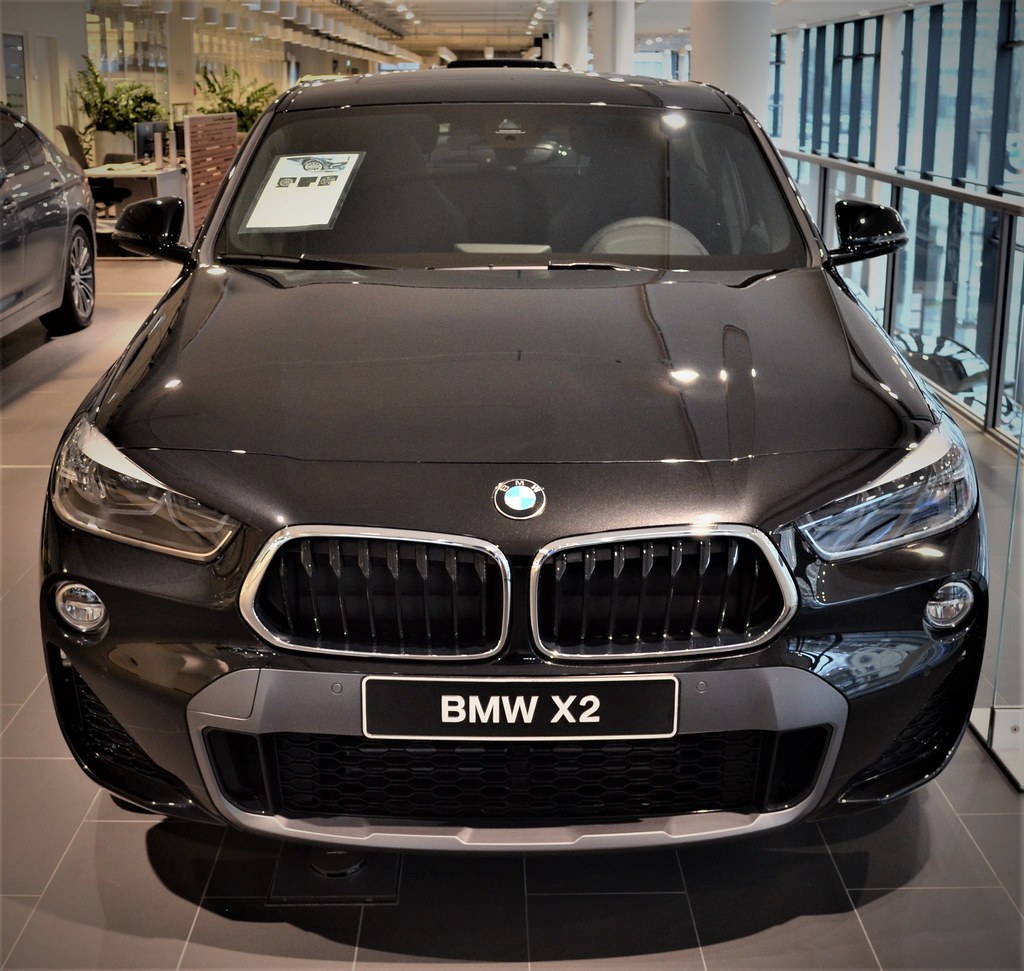
9. **BMW X2**
The BMW X2, a subcompact luxury SUV that has gained popularity across several states in recent years, presents a mixed bag for buyers, contributing to its extended stay on dealer lots. Its stylish exterior design and generally enjoyable driving experience for a vehicle in its class are undeniable draws, characteristic of the broader BMW brand’s appeal. However, these positive attributes are notably counterbalanced by significant drawbacks that appear to be actively hindering its sales momentum.
According to analysis from Car and Driver, the X2 is plagued by a harsh, bumpy ride—a significant detractor for a luxury vehicle, where ride comfort is paramount. Furthermore, its cabin tends to be surprisingly loud, especially when navigating rougher roads, which compromises the refined driving experience expected from a BMW. These experiential issues collectively detract from the overall comfort and premium feel that discerning luxury SUV buyers seek, making the vehicle less appealing despite its aesthetic and performance capabilities. Such critical drawbacks can often outweigh design appeal, leading units to gather dust while consumers opt for smoother, quieter alternatives.
Car Model Information: 2019 BMW X2 M35i
Name: BMW X2
Manufacturer: BMW
Production: November 2017 – October 2022,November 2023 – present
Class: Subcompact luxury crossover SUV
BodyStyle: SUV
Layout: ubl
Related: BMW X1
Categories: 2020s cars, All-wheel-drive vehicles, Articles with short description, BMW vehicles, Cars introduced in 2017
Summary: The BMW X2 is a subcompact luxury crossover SUV produced by BMW since 2017. It is marketed as a sports activity coupé (SAC), it is considered a sportier and less practical alternative to the X1, as is the case with other even-numbered X models with its respective counterparts.
Get more information about: BMW X2
Buying a high-performing used car >>>
Brand: BMW Model: X2
Price: $19,950 Mileage: 82,354 mi.
Read more about: Dealer’s Nightmare: The 8 Cars Nobody Will Buy Even with Massive Discounts
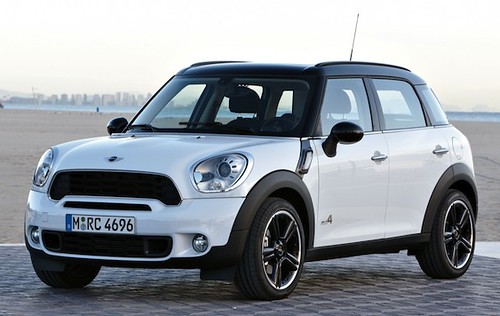
10. **Mini Countryman**
The Mini Countryman, the largest model within the Mini series, also faces challenges in accelerating its sales, despite a recent full redesign for the 2025 model year and several attractive features. While it boasts a fun design, a distinctive and engaging interior, and commendable warranty plans, its comparative size and power output appear to be key factors in its slow movement off dealer lots. Priced starting at $39,895, the base model comes equipped with a turbocharged three-cylinder engine that produces 134 horsepower.
This horsepower figure, however, may not be enough to deliver the brisk acceleration or robust performance that many SUV buyers expect, especially when juxtaposed against similarly priced or sized competitors in the crowded subcompact SUV segment. Even with its charismatic design and strong brand appeal, the perceived lack of sufficient power for its class can be a significant barrier to purchase. The current slow sales suggest that while the redesign is fresh, it has not fully addressed the market’s demand for more spirited performance, thereby offering potential buyers the opportunity to secure a discount on a model that needs to move.
Beyond the individual characteristics and specific challenges of these SUVs, broader macroeconomic and industry-specific factors play a pivotal role in shaping overall sales trends. The automotive market is a complex ecosystem, continuously influenced by everything from global supply chain disruptions to shifting environmental priorities. Understanding these larger forces is crucial to fully grasping why certain vehicles become ‘nightmares in the driveway’ for dealerships.
**The Impact of Fuel Prices on SUV Demand**
One of the most significant external forces consistently influencing SUV sales is the volatile nature of fuel prices. When gasoline costs surge, the economic viability and appeal of larger, less fuel-efficient vehicles like many SUVs diminish considerably. This direct financial pressure invariably steers consumer preferences away from gas-guzzling models and towards more economical, fuel-efficient alternatives across the board.
High fuel expenditures directly inflate the ongoing operational costs of owning an SUV, making them a less appealing choice for daily commutes and long-distance travel. This shift in buyer behavior consequently leaves dealerships with a growing surplus of unsold SUVs, struggling to align their inventory with prevailing market demands and consumer budgeting concerns. Dealers often respond by implementing aggressive price cuts and offering tempting deals in a bid to attract buyers who might otherwise choose a vehicle promising better mileage.
Such strategies, while potentially beneficial for savvy consumers seeking a bargain, emphatically highlight the immense influence fuel prices wield over the desirability and sales pace of SUVs. Consequently, fluctuations in gasoline costs serve as a direct and often immediate indicator of consumer interest, closely correlating with the volume of SUVs that remain unsold on dealership lots. This constant interplay between pump prices and purchase decisions underscores a fundamental and recurring challenge for the entire SUV market.
**Changing Consumer Preferences and the SUV Market**
The SUV market is currently undergoing a profound transformation, driven by an accelerating and widespread shift in consumer preferences. There is a growing inclination towards sustainability and the seamless integration of advanced technology, moving distinctly away from the more traditional vehicle attributes that once solely defined appeal. Environmental consciousness is increasingly guiding purchasing decisions, actively directing consumers towards electric and hybrid models and subsequently sidelining the conventional, fuel-intensive SUVs that once dominated the market.
This emerging ‘green revolution,’ coupled with an escalating demand for state-of-the-art features, profoundly reconfigures consumer desires and expectations. Buyers are actively seeking innovations such as sophisticated autonomous driving capabilities, seamless connectivity, and intuitive infotainment systems as standard requirements. Younger demographics, in particular, are not just looking for practical transportation; they also demand vehicles that align closely with their personal values and contemporary lifestyle aspirations, emphasizing connectivity and eco-friendliness.
This significant evolution in preferences presents a formidable challenge for dealerships holding inventories of traditional SUVs that may now lack these modern, highly sought-after attributes. As a result, moving these vehicles off the lot often necessitates substantial concessions, aggressive pricing, or immediate and compelling model updates. The imperative for manufacturers to integrate eco-friendly options and the latest technological advancements into their SUV lineups is now more urgent than ever, ensuring their offerings remain relevant and compelling to today’s highly discerning consumers.
**Overproduction and Its Consequences for SUV Inventory**
A considerable factor exacerbating the challenge of unsold SUVs on dealer lots is the automotive industry’s pervasive tendency towards overproduction. Manufacturers, often spurred by previous market successes and overly optimistic forecasts, frequently escalate production volumes, anticipating a continuous upward trend in consumer demand that may not materialize. However, when this anticipated demand fails to materialize at expected levels—perhaps due to broader economic downturns, unforeseen shifts in consumer preferences, or sudden spikes in fuel prices—dealerships inevitably find themselves grappling with an overwhelming excess of SUV inventory.
This surplus triggers a widespread ripple effect throughout the market, compelling dealers to introduce significant discounts and attractive incentives in their efforts to clear their lots. Such measures, while aiming to move vehicles, can unfortunately erode profit margins for both dealers and manufacturers and potentially diminish the perceived market value of these SUVs over time. Furthermore, a saturated market, which is a direct consequence of overproduction, inherently reduces the exclusivity and distinct allure historically associated with owning a new SUV.
As both manufacturers and dealerships navigate these complex challenges, the critical need to align production capacities more precisely with realistic, real-time market demand becomes strikingly clear. This strategic alignment is paramount to mitigating the detrimental effects of overproduction, thereby ensuring that the supply of SUVs more accurately mirrors genuine consumer interest and prevailing market conditions. Balancing supply and demand is not merely about operational efficiency; it is fundamentally about maintaining the long-term health and perceived value within the automotive market.
**The Role of Marketing in Moving Unsold SUVs**
In the dynamic and fiercely competitive landscape of the automotive market, where consumer preferences are rapidly evolving, marketing emerges as a pivotal force in effectively addressing the issue of unsold SUVs. Effective and innovative marketing strategies are indispensable, transforming inventory stagnation into vibrant sales momentum for dealerships that are struggling to move specific models. Collaborating closely with manufacturers, dealerships are increasingly deploying targeted advertising campaigns, strategic social media promotions, and highly personalized outreach initiatives to connect with potential buyers.
These efforts are meticulously designed to underscore the unique value propositions inherent in their SUV models. The aim extends far beyond simply showcasing features; it involves crafting compelling narratives that deeply resonate with the aspirations, practical concerns, and lifestyle needs of prospective buyers. For example, marketing campaigns might strategically highlight an SUV’s versatility, robust safety features, or its suitability for specific family needs, positioning it as the ideal choice for adventurous individuals or families seeking dependable transportation that meets their specific requirements.
Additionally, attractive special financing offers, flexible lease deals, and generous trade-in incentives are prominently featured across all marketing materials to sweeten the deal. This comprehensive approach is strategically designed to make these SUVs more accessible and appealing to hesitant buyers. By effectively communicating the distinct benefits and available deals, marketing transforms into an exceptionally powerful tool, significantly reducing the volume of unsold SUVs and ensuring they transition seamlessly from the dealership lot to the driveway of their new owners.
Car Model Information: 2025 MINI Countryman S
Name: MINI Countryman
Caption: 2018 Mini Countryman Cooper S (pre-facelift)
Manufacturer: BMW
Aka: Mini Crossover (Japan, until 2024)
Production: 2010–present
Class: Subcompact crossover SUV
BodyStyle: SUV
Layout: Front-engine, front-wheel-drive
Categories: 2020s cars, All-wheel-drive vehicles, All Wikipedia articles written in British English, All articles needing additional references, Articles needing additional references from May 2023
Summary: The Mini Countryman, also called Mini Crossover in Japan until 2024, is a subcompact crossover SUV, the first vehicle of this type to be launched by BMW under the Mini marque. It was launched in 2010 and received a facelift in 2014. The second generation vehicle was released in 2017 and received a facelift in 2020. The third generation of the Countryman was released in 2023.
Get more information about: Mini Countryman
Buying a high-performing used car >>>
Brand: Mini Model: Countryman
Price: $34,499 Mileage: 14,629 mi.
Read more about: Dealer’s Nightmare: The 8 Cars Nobody Will Buy Even with Massive Discounts
The journey through these slow-selling SUVs and the broader market forces influencing them reveals a nuanced and complex picture of the automotive industry today. From specific model shortcomings and competitive pressures to sweeping economic trends and evolving consumer values, the reasons behind a vehicle’s extended stay on the lot are varied and intricate. For consumers, this dynamic landscape presents a unique and compelling opportunity: a chance to leverage dealer motivation and secure a premium vehicle with potentially significant savings. As the market continues its rapid evolution, understanding these intricate dynamics empowers buyers to make more informed and strategic decisions, ultimately turning a dealership’s inventory ‘nightmare’ into a personal driveway dream.


